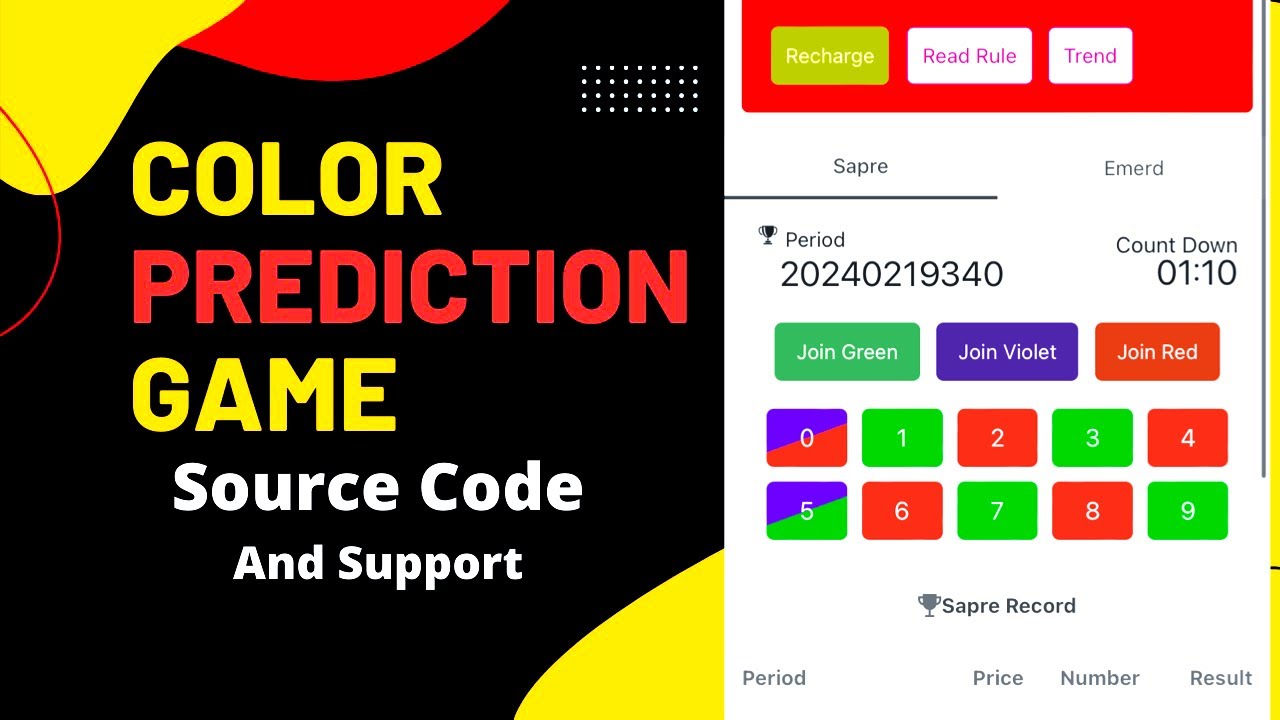The Colour Trading Game has emerged as a popular and engaging method for new traders to dip their toes into the world of trading. This game simplifies complex trading concepts and offers a risk-free environment to practice strategies and understand market dynamics. Whether you are a novice or someone looking to refine your skills, here are some best practices to maximize your learning experience and success in the Colour Trading Game.
Understanding the Basics
Before diving into strategies, it is crucial to understand the basic mechanics of the Colour Trading Game. In essence, the game simulates a market where different colors represent various assets. Players buy and sell these colored assets based on market trends, news, and personal strategies, aiming to maximize their virtual profit.
- Game Rules and Objectives: The primary objective is to make the most profit by trading colors. Familiarize yourself with the rules, including how transactions are conducted, how market prices are determined, and what factors influence these prices.
- Market Dynamics: Just like in real-world trading, market dynamics in the Colour Trading Game are influenced by supply and demand, player actions, and sometimes randomized events that simulate real-life market news. Understanding these dynamics is key to making informed trading decisions.
Starting with a Strategy
A well-thought-out strategy is essential for success in the Colour Trading Game. Here are some strategies tailored for new traders:
- Diversification: Don’t put all your eggs in one basket. Diversifying your portfolio by trading multiple colors can reduce risk. If one color’s market crashes, you still have other assets that may perform well.
- Trend Following: This involves identifying and following market trends. If a particular color is consistently rising, it might be a good idea to buy and ride the wave. However, be cautious of sudden reversals and always have an exit plan.
- Contrarian Strategy: This strategy involves going against the market trend. If you notice that a color is undervalued and has potential for growth, you can buy low and sell high once the market corrects itself.
- Scalping: This involves making quick trades to capitalize on small price movements. It requires a keen eye on the market and quick decision-making skills. While it can be profitable, it’s also riskier due to the need for rapid transactions.
Analyzing Market Information
Information is power in trading. In the Colour Trading Game, staying informed about market trends, player actions, and game events is crucial.
- Market News: Pay attention to in-game news that can affect the market. This could include announcements, player activities, or simulated economic indicators. Reacting quickly to news can give you a competitive edge.
- Charts and Data: Use the game’s charts and data analysis tools to track price movements, volume, and other relevant metrics. This can help you identify patterns and make informed predictions about future price movements.
- Player Behavior: Observing other players’ actions can provide insights into market sentiment. If many players are buying a particular color, it could indicate a bullish trend, whereas widespread selling might suggest a downturn.
Risk Management
Effective risk management is essential to protect your capital and ensure long-term success in the Colour Trading Game.
- Set Stop-Loss Orders: A stop-loss order automatically sells a color when its price drops to a certain level, limiting your losses. Setting stop-loss orders can prevent significant losses during market downturns.
- Position Sizing: Determine how much of your capital to allocate to each trade. Avoid risking too much on a single trade, as this can lead to substantial losses. A common rule of thumb is to risk only a small percentage of your total capital on each trade.
- Emotional Control: Trading can be emotionally taxing, especially during volatile market conditions. Maintain emotional discipline and avoid making impulsive decisions based on fear or greed. Stick to your strategy and make decisions based on analysis rather than emotions.
Continuous Learning and Improvement
The Colour Trading Game is not just about making profits; it’s also a valuable learning tool. Here’s how you can continuously improve your trading skills:
- Review Your Trades: After each trading session, review your trades to identify what went well and what didn’t. Understanding your mistakes is key to improving your strategy and avoiding similar errors in the future.
- Learn from Others: Engage with other players, join forums, and participate in discussions. Learning from others’ experiences can provide new perspectives and strategies that you can incorporate into your own trading.
- Stay Updated on Trading Strategies: The world of trading is constantly evolving. Stay updated on the latest trading strategies, tools, and technologies. Read books, attend webinars, and follow trading blogs to expand your knowledge.
Leveraging Game Features
The Colour Trading Game offers various features that can enhance your trading experience:
- Practice Mode: Use the practice mode to test new strategies without risking your capital. This is a great way to experiment and refine your approach before implementing it in the live game.
- Simulation Tools: Take advantage of simulation tools that allow you to backtest your strategies using historical data. This can help you understand how your strategy would have performed in different market conditions.
- Community Interaction: Engaging with the game’s community can provide valuable insights and support. Participate in community events, challenges, and discussions to enhance your learning experience.
Conclusion
The Colour Trading Game is an excellent platform for new traders to learn the ropes of trading in a fun and risk-free environment. By understanding the basics, developing a solid strategy, staying informed, managing risks, and continuously learning, you can enhance your trading skills and increase your chances of success. Remember, the key to successful trading is not just making profits but also learning from your experiences and continuously improving your approach. Happy trading!

